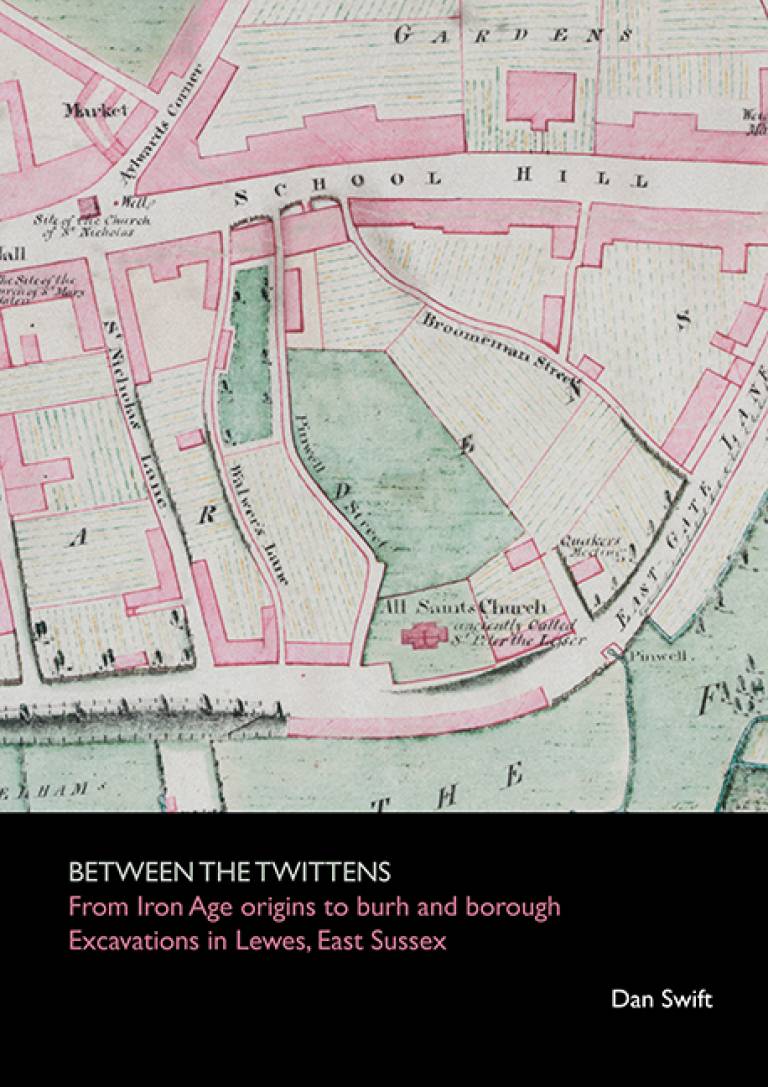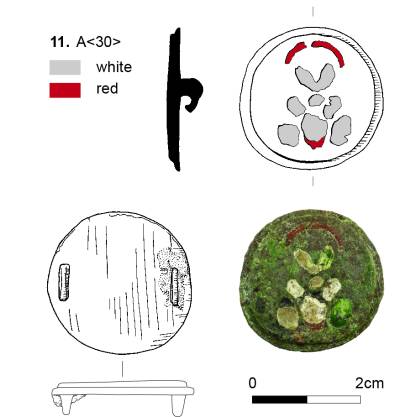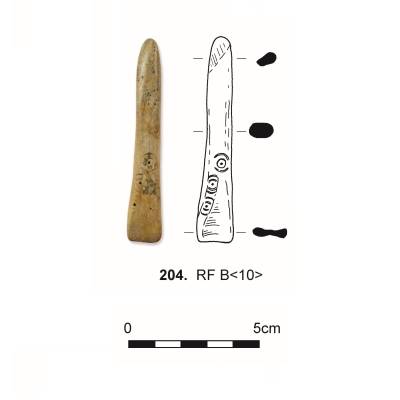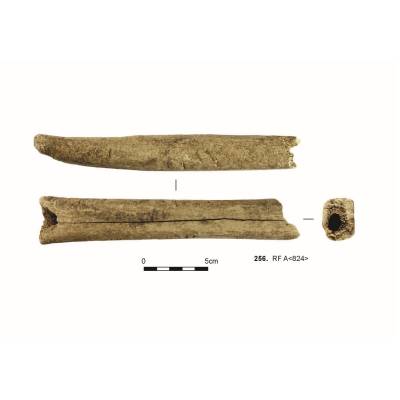Finds Officer Favourites: Elke’s top finds from ASE's NEW book on Excavations at Lewes
24 November 2023
ASEs 'NEW book ‘Between The Twittens: From Iron Age Origins To Burh and Borough. Excavations in Lewes, East Sussex’ is out now! Join Finds Officer Elke for a peek into the monograph as she highlights her favourite artefacts from the excavations and why she is so fond of them…

"The finds assemblage from Lewes was particularly interesting to work on because it is still the only sizeable medieval group found in East Sussex, and it gives a great – and rare - insight into the medieval people of Lewes."
"One of the most interesting finds is a small copper-alloy disc brooch with red and white champlevé (enamel) decoration showing the stylised bust of a saint. This type of brooch is called ‘heiligenfibeln’, literally Saint-brooch, and is common especially in Germany. It is very rare in England with only a handful of examples known, including one in Billingsgate, and it is definitely an imported item, possibly dating to the 9th century. A brooch like this raises questions - was it was brought in by a foreign visitor or immigrant, or brought back by an influential, wealthy local? While these may never be answered, a small object such as this does evoke a world which was much better connected than we often realise, where people did travel far and wide."

"At the other end of this scale are objects in animal bone, some made by specialist craftspeople, but many made by individuals almost on an ad hoc basis, perhaps in the evening by the fireside. Examples of objects from Lewes include a flute, spindlewhorls and a ‘buzz-bone’. One of my favourite objects however are bone pin-beaters, used by their owner(s) to separate threads whilst weaving. They are often highly polished through extensive and perhaps daily usage, and it is this tangible link to their past use that makes them such lovely objects. An especially nice and complete example shows simple ring-and-dot decoration. It dates to the 10th to 13th century."


 Close
Close

